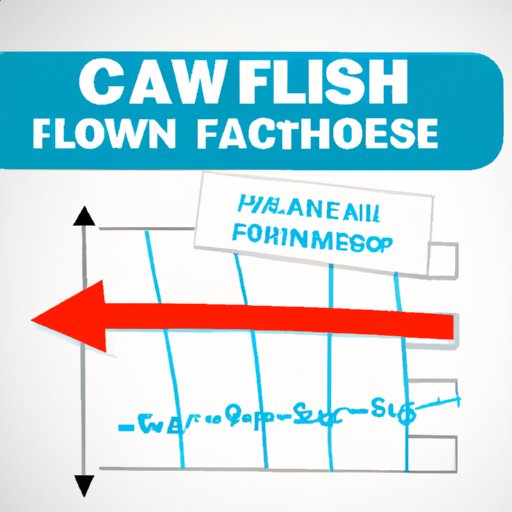
I. Introduction
Free cash flow is a key financial metric that provides essential insights into a company’s financial health and performance. Understanding free cash flow is crucial, especially for investors, lenders, and other stakeholders interested in assessing a company’s viability, profitability, and growth potential.
This article explores how to calculate free cash flow, its importance, and benefits. Whether you are a beginner or an experienced financial analyst, this comprehensive guide will provide you with the necessary knowledge and tools to master free cash flow calculation.
II. Why Free Cash Flow is Important and How to Calculate It
Free cash flow refers to the amount of cash a company generates after accounting for all of its capital expenditures (CAPEX).
Free cash flow enables investors, lenders, and other stakeholders to assess a company’s ability to pay dividends, repay debt, invest in growth opportunities, and maintain a healthy financial position. Moreover, free cash flow analysis helps identify financial risks, performance trends, and strategic opportunities.
The formula for calculating free cash flow is:
FCF = Cash from Operations – CAPEX
The resulting figure represents the net cash flow available to the company’s shareholders and creditors.
III. The Beginner’s Guide to Understanding Free Cash Flow and Its Calculation
To understand free cash flow, it’s essential to understand cash flow and its components. Cash flow refers to the net change in a company’s cash balance over a given time period, such as a quarter or a year. The three main components of cash flow are:
- Cash from operations (CFO)
- Cash from investments (CFI)
- Cash from financing (CFF)
Of these three, CFO is the most important component in determining free cash flow. CFO represents the cash generated or consumed by a company’s core operations, such as sales, production, and administration.
Free cash flow differs from other financial metrics, such as earnings before interest, taxes, depreciation, and amortization (EBITDA). EBITDA only accounts for a company’s operating profitability, whereas free cash flow takes into account a company’s capital investments.
To calculate free cash flow, follow these simple steps:
- Find the cash flow from operations (CFO) figure in the company’s cash flow statement.
- Identify the capital expenditures (CAPEX) made by the company during the same period, usually in the investing section of the cash flow statement.
- Subtract CAPEX from CFO to get the free cash flow (FCF) figure.
IV. From Net Income to Free Cash Flow: Simplifying the Calculation Process for Any Business
Net income and free cash flow are two different financial metrics, but they are related. Net income is a measure of a company’s profitability, while free cash flow measures the amount of cash available to a company’s shareholders and creditors after CAPEX.
To convert net income to free cash flow, there are several adjustments that need to be made. These include:
- Deducting non-cash expenses: depreciation and amortization.
- Adding back non-operating expenses: interest and taxes.
- Deducting any increases in working capital, such as accounts receivable and inventory.
- Deducting any dividends paid to shareholders.
- Adding back any proceeds received from the sale of fixed assets.
It’s essential to avoid common mistakes when calculating free cash flow. One of the most significant errors is double-counting capital expenditures by including them in both the cash flow from investing and the cash flow from operations sections of the cash flow statement.
V. Mastering Free Cash Flow: Tips, Tricks, and Formulas for Success
Advanced techniques can be used in calculating free cash flow. One example is the usage of a discounted free cash flow (DCF) analysis. DCF analysis takes into account the time value of money by discounting future cash flows to their present value. This can help determine a company’s intrinsic value and potential for growth.
There are several other formulas useful for financial analysis. These include:
- Price to earnings ratio (P/E)
- Price to cash flow ratio (P/CF)
- Dividend yield
- Return on investment (ROI)
- Debt to equity ratio (D/E)
Real-life examples of calculating free cash flow for companies can also provide insight into common issues and optimization techniques.
VI. A Comprehensive Approach to Calculating Free Cash Flow and Its Role in Financial Analysis
Free cash flow is a vital component of financial analysis. Different industries and business types may require separate methodologies for free cash flow calculation. However, comparative analysis of free cash flow across industries can provide useful insights into a company’s performance relative to its peers.
One of the ways that businesses can derive additional benefits from free cash flow analysis is by using it to inform capital allocation and investment decisions. By comprehensively analyzing free cash flow, businesses can determine the profitability of new ventures and identify opportunities for investment that may not have been apparent.
VII. Step-by-Step Guide to Calculating Free Cash Flow for Your Business
To calculate free cash flow for a business, start by identifying its relevant financial data, including cash flow statements, balance sheets, and income statements.
From there, calculate the cash flow from operations, deduct the CAPEX, and the result will be the free cash flow. The formula for calculating free cash flow is:
FCF = Cash from Operations – CAPEX
It’s crucial to review the cash flow statement and ensure that there are no double-counted entries or mistakes that could distort the free cash flow figure.
VIII. Conclusion
In conclusion, calculating free cash flow is an important financial metric for businesses, investors, and other stakeholders. Understanding free cash flow, its benefits, and how to calculate it step-by-step is essential to make informed investment decisions and assess the financial performance of a company.
By using free cash flow analysis, businesses can profitably allocate capital, maintain healthy financial positions, and create long-term value for shareholders.
Start using free cash flow analysis today and gain a competitive edge in your financial analysis endeavors.




